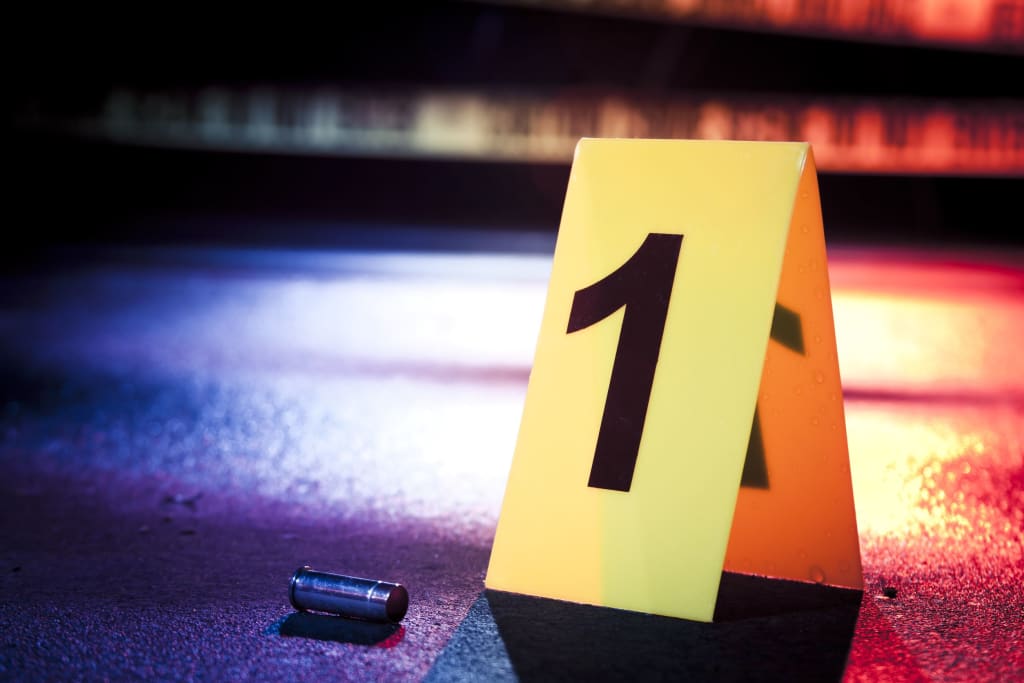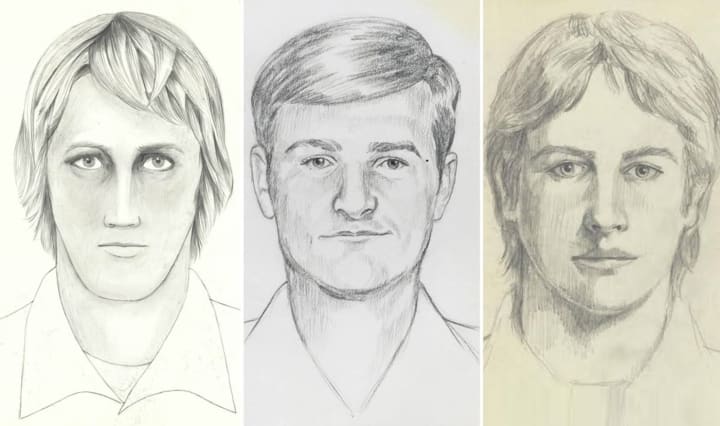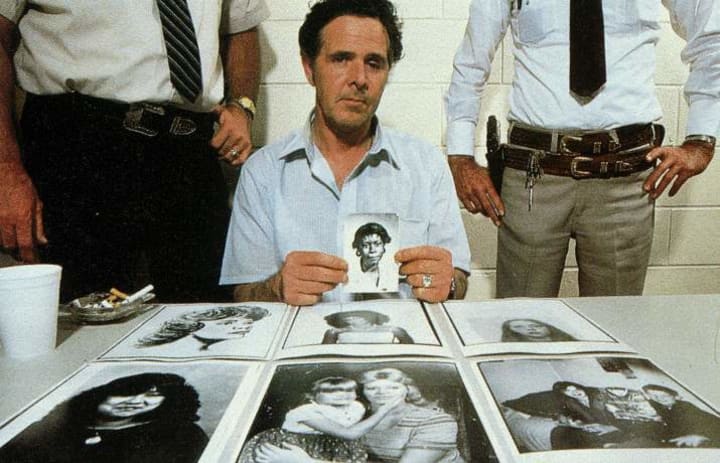Cold Case Mysteries That Were Finally Solved
Forensic technology has come a long way in the last few decades, happily resulting in these cold case mysteries that were finally solved.

When all leads dry up and new ones stop arising, a case must eventually be considered cold. Cold cases are always frustrating, especially for the investigating officers, but sometimes there is simply no available way to track down a criminal with the information and technology available. However, even cases that have long gone cold may not be hopeless: With the progression of forensic technology, especially new data on DNA testing, familial DNA procedures, and more recently, evidence from formerly cold cases can be used to find murderers and rapists, years after they seemed to have gotten away with it. These cold case mysteries that were finally solved oftentimes owe their eventual closing to such technologies and advancements in the fields of forensics and investigative law enforcement.
The Golden State Killer

The Golden State Killer is a name on everyone's mind these days. The incredible case involves a serial killer and rapist that operated in at least three different areas of California, given multiple names by the media, and never found—despite the investigating officers collecting DNA evidence from some of the crime scenes.
This DNA evidence was useless until only recently, when they used familial DNA to track him down via an ancestry site. One of the newest things you should know about DNA testing, his DNA was plugged into one of these sites—GEDMatch—and authorities were able to track down the killer's family members. Then, using the suspect information they had collected to narrow the results, authorities ultimately identified the killer as Joseph DeAngelo. The case had been cold for over 30 years.
The Murder of Maria Ridulph
It's not always old DNA that solves cold cases. In the case of Maria Ridulph, it was the deathbed confession of the girl's mother that brought police to the likely suspect. Maria disappeared when she was just 7 years old, and her body was found 5 months later. She died in 1957, and the case went cold not long thereafter. However, the police did have one suspect, a John Tessier, who fit the description of the kidnapper and changed his alibi multiple times. Even so, there was not enough to convict him, until his mother gave a deathbed confession that she had always believed he did it. After this confession, police reopened the case in 2011 and arrested Tessier shortly after. At the time of his conviction, this was the oldest cold case of any cold case mysteries that were actually solved.
The Kidnapping of Amanda Berry, Gina DeJesus, and Michelle Knight

Seymour Avenue, home of Ariel Castro. Photo by THD3 from Wikimedia Commons.
When a missing persons case goes cold, and the missing are not found for years, most assume the worst. But in the case of Amanda Berry, Gina DeJesus, and Michelle Knight, the 10-year cold case had a happier ending. In 2013, the three women escaped from their captor and were found alive. While their testimony alone would likely have been enough to put Ariel Castro, their abductor and abuser, away, it was advancements in DNA technology that clinched the sentence. His DNA matched Amanda Berry's daughter, who she had while held captive, and as a result, Castro pleaded guilty and was sentenced to life plus 1,000 years in jail, without parole, for his heinous crimes. However, he committed suicide just a month into his sentence. All three women now work to help abuse victims in various ways, and hope to move on with their own lives by helping others do the same.
The Southside Slayer
Chester Turner was a serial killer who terrorized Los Angeles, killing at least ten women over the course of a decade. From 1987 to 1998, he killed a number of women, and though DNA evidence was collected, it was never matched to him until years later, in 2003. At this time, Turner had to give the police a DNA sample as a result of his conviction for the rape of a 47-year-old woman. When this DNA was matched to a number of cold cases dating back 20 years, he was convicted of at least 11 of the murders. Some of these included murders for which another man had been wrongfully convicted, leading the eventual release of David Jones in 2004, followed by a hefty lawsuit for his wrongful conviction.
The Murders of Richard Phillips and Milton Curtis

In El Segundo, California, a city in Los Angeles County, two cops were shot to death after stopping an assault and robbery suspect. The victims, Richard Phillips and Milton Curtis, had stopped the suspect, Gerald Mason, for a mere traffic infringement—running a red light while speeding away from the robbery. This happened in 1957. Though they found Gerald Mason's fingerprints, they were not, at that point, in the system, and so he was not caught.
In 2003, authorities re-ran the fingerprints, and this time identified Mason. When confronted with this hard evidence, Mason confessed, and pleaded guilty to the charges. He had lived the last half-century with guilt and remorse for the killings, and had lived a quiet life since then.
The Murder of Angela Kleinsorge
Recent advancements in DNA technology, especially familial DNA, have even enabled authorities to solve cold cases committed by individuals who are now dead. Though bringing justice to these criminals is no longer possible, we are now able to put old cases to rest, and perhaps give some comfort to the victims or family members.
Such is the case with the murder of Angela Kleinsorge. Angela was murdered in San Diego more than 25 years ago, but her killer was not identified until just last year. With the success of familial DNA searching becoming more and more prevalent in criminal investigations, authorities were able to trace DNA evidence to one of two brothers. The first brother was not a match, and so, although the second brother has already died, authorities were still able to identify him as the murderer.
Henry Lee Lucas

Photo from murderpedia
The case of Henry Lee Lucas is an interesting one from many angles. First of all, authorities to this day are uncertain of how many people he has killed, as he at one point claimed to be responsible for over 3,000. The real number may be somewhere around 350, but he has been known to confess to murders that were later discovered he did not commit. Another reason this is a particularly interesting one of the cold case mysteries that were finally solved is the manner in which he was caught: by confession. After an incredibly prolific few decades as a serial killer, he was arrested for possession of a deadly weapon. It seems that at this point, he couldn't resist bragging, and confessed to a number of his murders in detail, murders that had previously been long cold.
The Murders of Michelle Lozano and Bree'Anna Guzman
Michelle Lozano and Bree'Anna Guzman were both assaulted and murdered in Los Angeles in 2011. Though DNA evidence was found at the time, authorities were unable to match it to a suspect. That is, until the recent development of familial DNA searching. Using this cutting-edge forensic method, LAPD tracked down who they believed to be a likely suspect: Geovanni Borjas. However, they did not have enough to arrest Borjas, without a positive DNA match. So, they tailed Borjas, and finally collected a DNA sample when he spit on the sidewalk, leading to his positive identification as the killer and subsequent arrest.
The Murder of Cyrus Jefferson

Photo by Dom J from Pexels
Over 30 years ago, police suspected Stacy Littleton to have murdered Cyrus Jefferson. Their suspicions could not be proven at the time, as little DNA evidence was found, and none of it conclusively pointed to Littleton. Though they strongly believed him to be guilty, the authorities had no choice but to let him walk, and let the case grow cold.
That is, until one diligent cold case investigator revisited the case in 2017. After noticing a glove that had not been tested for evidence in the 1986 investigation, authorities were finally able to place Littleton conclusively at the crime scene. To make things easier, Littleton had already been arrested on unrelated drug charges. The police had only to add on the murder charge, and the years of prison he serves today.
The Murder of James Layne
In 1989, the body of James Layne was found in a motel room in Alabama. The case was not solved until just last year, a year that saw the conclusion of many cold case mysteries that were finally solved. Since forensic technology has come such a long way in the last 30 years, authorities were able to access stored information from archives in order to pin a conviction on a suspect. In the case of James Layne, a fingerprint found on a beer bottle in the motel room was originally left unmatched. However, simply running it again 30 years later led to the identification of the second person in the room, a Samuel Reeves. When confronted, Reeves confessed to the crime and was charged with voluntary manslaughter.
About the Creator
Evelyn Starr
Is a practicing Wiccan who applies her spiritualism to real life situations and advice, but also dabbles in dark fantasy. She lives in Oregon and spends most of her time casting spells in the woods.






Comments
There are no comments for this story
Be the first to respond and start the conversation.